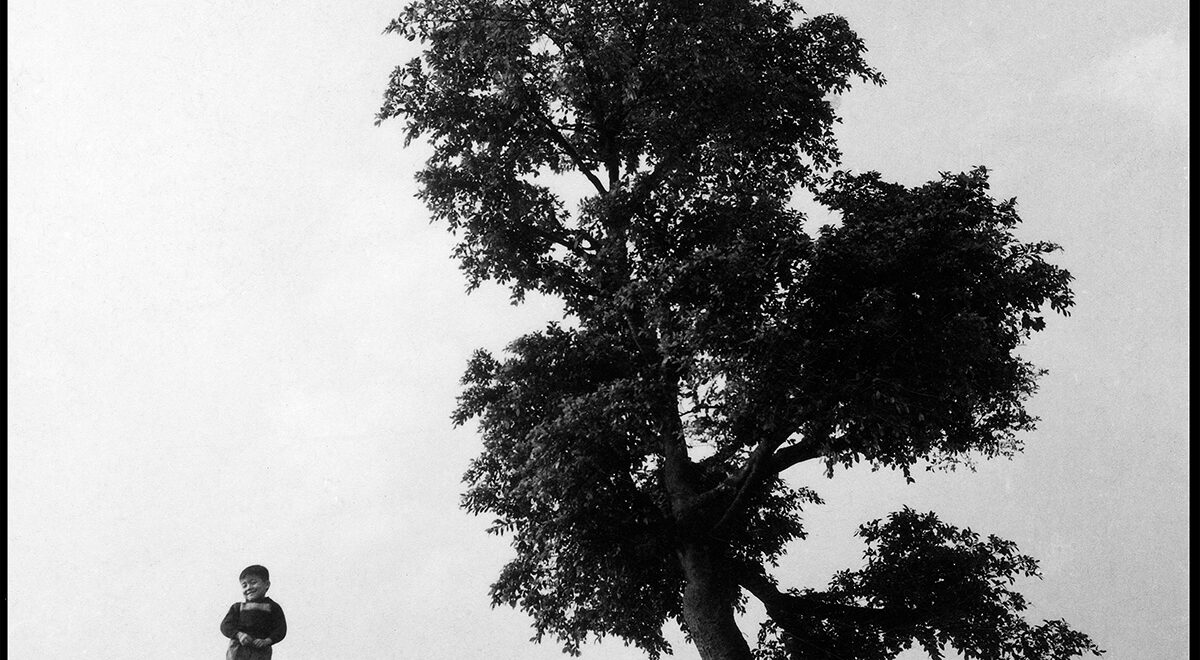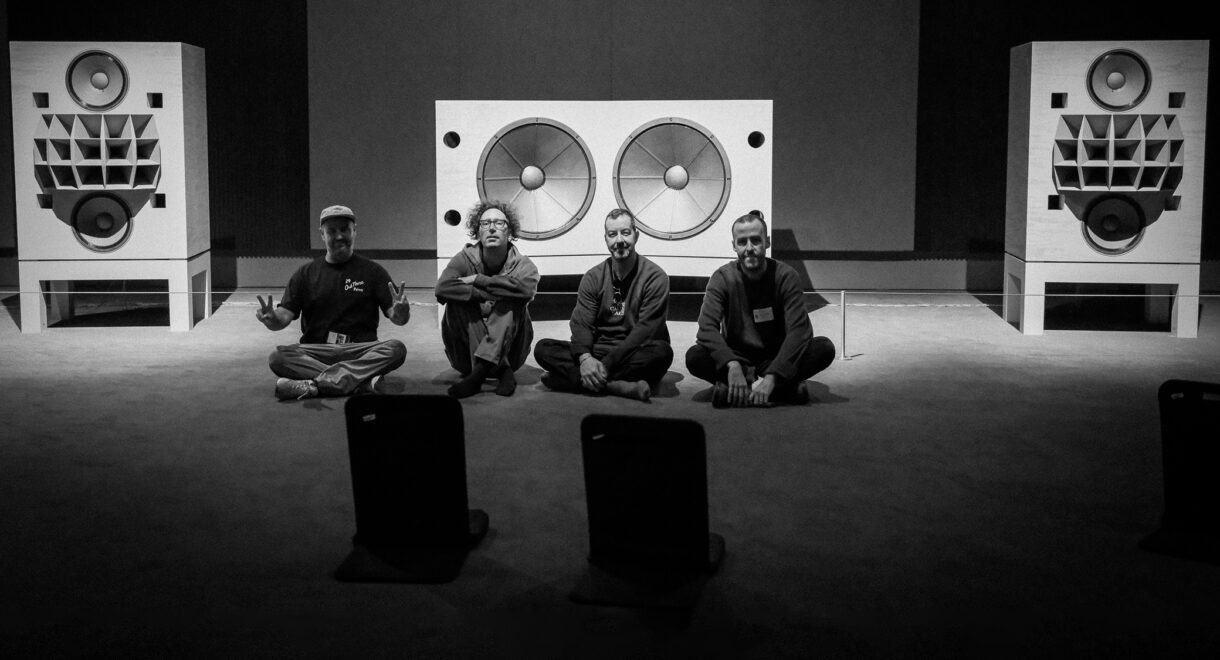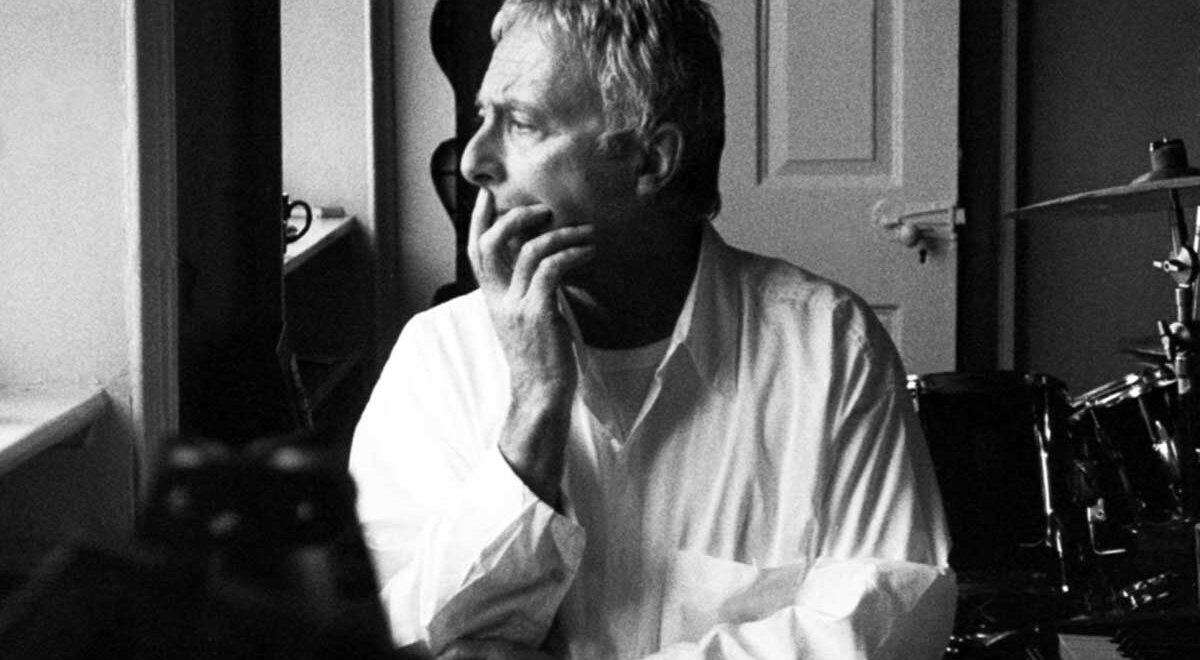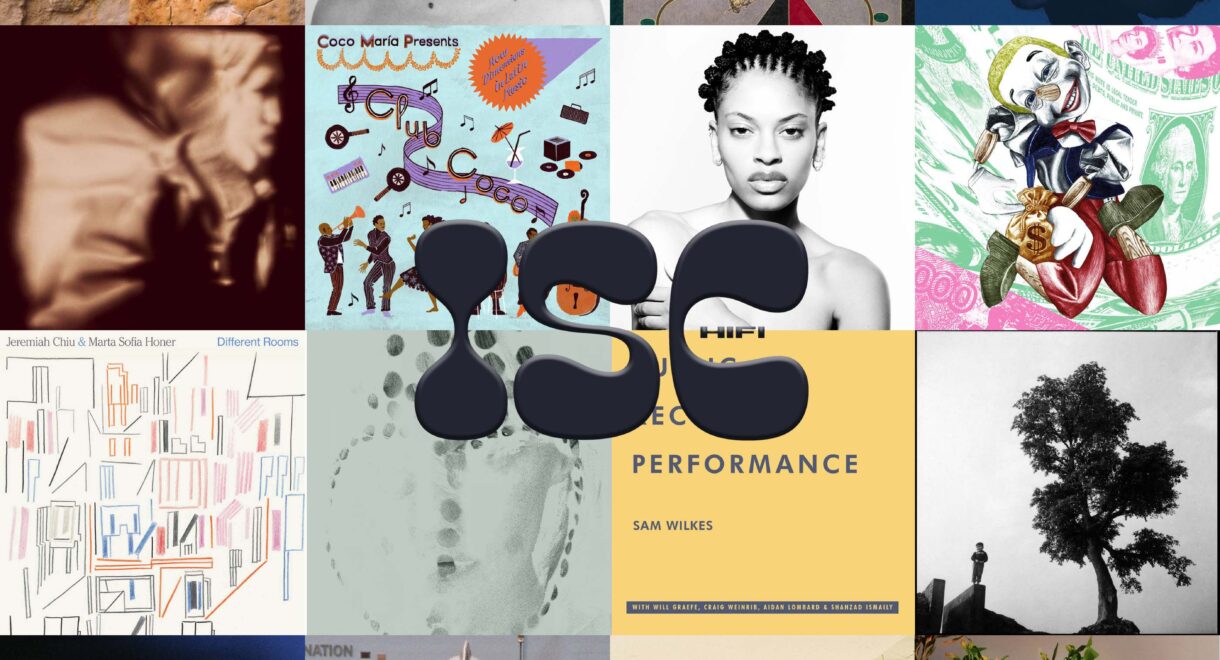November 14th, Spanish experimentalist Suso Sáiz joins us alongside Suzanne Kraft at In Sheep’s Clothing HQ. In the early ’80s, a group of young conservatory-trained musicians came together […]
Ingram Marshall on Tape Loops, Laments and the Dark Beauty in His Music
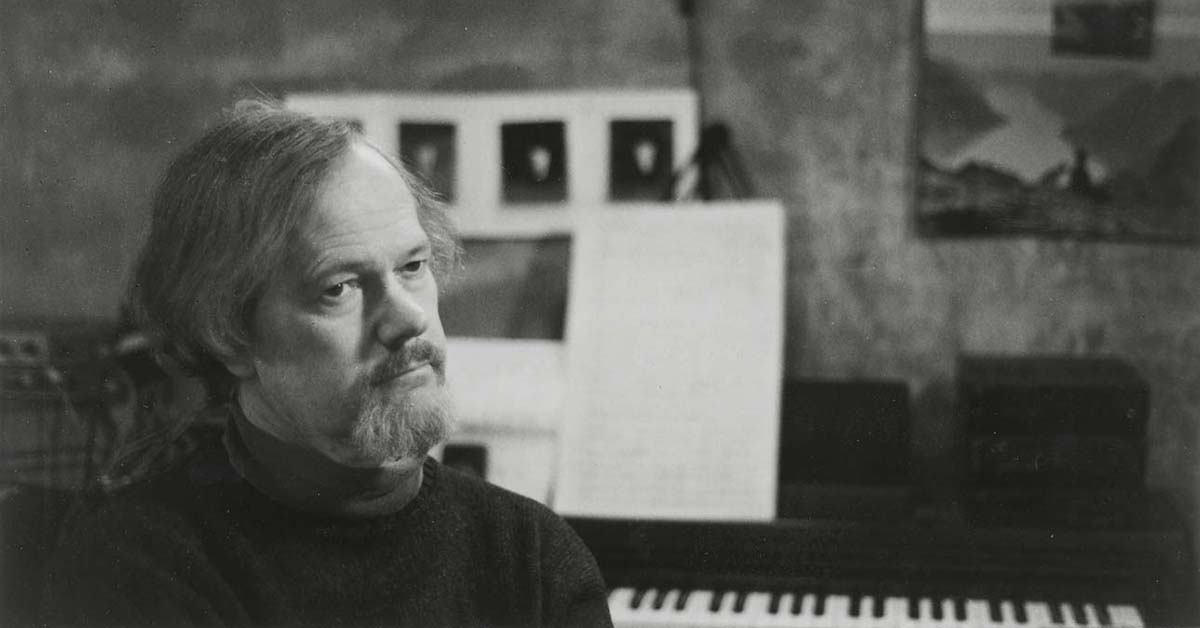
In this interview from the 1980s, Marshall looks back at the forces that shaped his music, from early tape experiments and West Coast freedom to the darker emotional currents that give his electronic work its weight and mystery.
A few months ago we returned to American Originals, the 1994 book of conversations with the composers who bent American experimental music into something wilder and more personal. The marquee names in that lineup appear quickly: Meredith Monk, Glenn Branca, Laurie Anderson, Terry Riley, Pauline Oliveros, Philip Glass, Steve Reich. They’re the figures most people mention when sketching the era’s shape, the ones who became shorthand for whole shifts in practice.
The late Ingram Marshall, who died in 2022, is in the same book, though he tends to hover outside that quick roll call. He didn’t become a banner name for a movement or a go-to citation in broader music writing, but his work carries a kind of emotional gravity that holds up against any of his peers. His blend of tape, voice, electronics, and field recordings in pieces like Fog Tropes and Hidden Voices creates an atmosphere that feels lived in, patient and unforced. His best work builds slowly, almost imperceptibly, until the whole thing lands with a weight that’s hard to shake.
What makes his interview in American Originals essential is how directly he talks about beauty and what the West Coast allowed him to do musically. He describes a loosening of pressure, a kind of distance that let melody and instinct come forward without the old academic guard watching over his shoulder. Set beside Harold Budd’s take on the same idea, the picture sharpens.
Budd put it this way in the same book: “Being immediately pretty is the most important. It overrides all concerns of structure, environment and so on. If you’ve already made your point by being even superficially pretty, or by making highly polished, well-finished little gems of something, that seems adequate to me.”
Marshall approaches the idea from another angle, but they’re circling the same truth: Beauty doesn’t need an apology.
Although a specific interview date isn’t mentioned, the below was likely conducted in the mid-1980s. The interviewer is co-author Geoff Smith.
What did you get from studying with Ussachevsky* at Columbia University?
As the years went by, I felt like I had less and less to do with that whole scene. But in the last few years I’ve felt that I got more out of it than I realized. I’ve been thinking a lot of Ussachevsky lately. He died a few years ago. In a way, he was responsible for my deciding to become a composer, by virtue of giving me encouragement, almost permission, to do what I was interested in. He didn’t have any influence on me stylistically, although his music went very much against the grain of the current serial or post-Webernesque style. He was more interested in transforming sound than in creating electronic sound and manipulating it in a technical way. (*Vladimir Ussachevsky co-founded the Columbia-Princeton Electronic Music Center in the 1950s.)
What sort of things were you producing at that time?
Well, I was just starting as a composer. I did one or two fully fledged pieces when I was studying with him, but then I left that scene and didn’t really do much for a few years. I got involved again with electronic music when Morton Subotnik was doing a free-for-all composers’ workshop at NYU. That was an electronic music studio of very different orientation from Columbia.
One that you felt more at home with?
Well, it was a composers’ collective. The people involved in it ran it, and it wasn’t situated in a strict academic scene.
What sort of things were you making at that stage?
I did some pieces using a Buchla synthesizer, and I did a few live electronic things. That’s also when I started getting interested in manipulating voices on tape and working with concrete sounds. Very shortly after that I went out to California.
Was that following Subotnik?
Basically, yes. He took me and a few other people out to CalArts.
What did you get from him as a teacher?
Again, very little stylistic influence. More just encouragement in professional savvy. He was a very savvy person. He knew how to get things done.
Did you ever feel any dichotomy between technology and expressiveness, or did you always use technology in the expressive way that you use it now?
That’s always been a hallmark of my work, attempting to humanize the technology, even unconsciously perhaps. Several critics have said that, and I would agree. My way of looking at all that technology is to try and subvert it so it doesn’t dominate.
Do you think you were able to do that because you were principally using musique concrète techniques? Whether digital or analogue, you’re generally manipulating real sound.
I think there’s a great built-in irony to electronic music. The first electronic music I ever heard, and probably one of the most impressive pieces there is, was Varèse’s Poème électronique. I remember hearing it on the radio when I was in college and getting all geared up for it. I was amazed because it was so unlike what I expected. It didn’t have a high-tech gloss. It had a gritty, down-to-earth and very musical sensibility. I was very attracted to it because of that. That’s one reason I thought I could go into electronic music, into this technical world, and rummage around to find what I needed. I wasn’t attracted to it because of the technical aspect, like a lot of composers seem to have been. I’ve always been suspicious of algorithms and so forth, though I’ve learned enough about them to do what I wanted.
What about the presentation of your electronic music? These days there’s the feeling that it’s not enough anymore to present it on its own, with the audience sitting in a darkened room with nothing to look at. Is that behind your collaborations with photographer Jim Bengston?
Actually, way before that I was doing live electronic music on my own. There’s an early piece called The Fragility Cycles; I used a Serge synthesizer, an old analogue synthesizer, and a tape-delay system in a live performance. I also used my voice a lot, and a long Balinese flute called a gambuh. I used those things to personalize or humanize the whole electronic music context. The good thing about live performance is that there is always a risk, an element of improvisation. The audience puts you on your toes. Maybe you’re not always able to do things to perfection, but when things happen well, it’s wonderful. When they don’t, it’s awful.
One time in the late 1970s I was doing this piece from The Fragility Cycles at a big festival in Berlin. There were a thousand people in the audience, and I was squeezed in between Terry Riley and some Japanese composer. There wasn’t much time to set up and sound check, so I was nervous. Some of my equipment had been lost by the airline. Then, right in the middle of my piece, in one of the most beautiful quiet sections where I’m cranking up the feedback to the highest levels, the feedback suddenly got out of control. This huge acoustical feedback filled the room, a loud screeching noise you might hear at a rock concert, only worse. They turned everything down, but it was still there. Finally I pulled the master amplifier down and the sound died, but it was awful.
You’ve said that The Fragility Cycles was a breakthrough piece. Why?
With that piece I was able to combine two elements I had been working on separately: the straight tape piece, either text-sound or musique concrète, and live electronic music, where synthesizer, tape manipulation and instrumental or vocal sounds were used and mixed in real time. In The Fragility Cycles I combine elements from both sides. There was a piece in there called Sibelius in His Radio Corner, which is basically a tape piece, but I play it through a tape-delay system so its acoustical ambience is in the same spirit as everything else. Artistically, that work was important because I was able to bring together the live and the non-live and put tape pieces into a performed context.
You mentioned Sibelius. Did his music influence you?
Of the older composers of that era he has certainly influenced me. I got interested in his music in 1975, and it was like rediscovering a composer I had known about but written off. The same was true, to an extent, for Bruckner. It seemed regressive suddenly to be in love with this arch-Romantic music, but I found it refreshingly new to my ears.
Do you see yourself as essentially coming from that tradition?
I guess so. I didn’t at first, but now I look back and see myself as steeped in that tradition, though I’ve gone about it in a meandering, oblique way.
Some points in Hidden Voices could almost appeal to a thoughtful alternative-rock audience.
Well, I hope it would. A lot of my music is quite accessible. It’s not that hard to like. Long ago I gave up the idea that modern music has to be a bitter pill you must swallow, as if it’s good for you but hard to get down. That’s one of the great corruptions of our age. It really came out of the post-war era, when the “gang of four” — Stockhausen, Boulez, Cage and Babbitt — banished lovely things from modernism. Cage would never say it like that, but he was always uncomfortable with music that was expressive. That wasn’t where he was going, and he took along a lot of people, as did the European serialists. What happened in the early to mid-1970s is that a lot of composers started reexamining the whole aesthetic issue and wanted to recapture things that had been thrown aside: melody, harmony and pulse, which Steve Reich used so well.
Is that the West Coaster in you? You’re not afraid of melody?
Yes, I think so. When I went out there I felt less inhibited. I could follow my instincts and didn’t have to worry about someone making sure I was doing the right thing.
How do you explain that?
There is a sense of being further away from control centers, part of the West Coast tradition. It’s one of the things I try to address in my paper California — the Great Permission Giver. There’s always been a feeling in California that you can go ahead and do what you want and nobody cares. It has a downside, because the institutions and structures of support are sometimes flaccid. But I strongly agree that there is a California sensibility that allows creative people to open up in ways they might not in more academic environments on the East Coast.
What about the influence of Indonesian music on your work?
That was profound. I went to CalArts in 1970 to do electronic music, but I got sidetracked in the first year by the Indonesian music there — a Javanese gamelan and two Indonesian teachers. In the summer of 1971 I was able to go to Indonesia and continue my studies. That year consumed me. When I went back and started composing again, I had a very different take on things. It had to do with time, how to use time. Not to fight it, but to ignore it. To deal with time on a glacial, long-term basis. My music has been longer ever since then. Not always in duration, but in its sense of time.
There also seems, for want of a better word, a sense of grimness in your music.
Well, Edward Strickland said it was gloomy. Gloomy or grim conjure horror-movie images, and I can’t accept that. But there is definitely a dark side. It deals with minor chords, it’s foreboding and apprehensive. So your adjectives aren’t far off. There’s tristesse, a pervasive lugubriousness. I can’t deny it.
How do you go about composing? Do you have a routine?
Once I begin a piece, I set up a routine. If I’m not in that process, I don’t. Last year I went to a talk by a composer bragging about his daily routine — orange juice, coffee, exercises, two hours of composing, then off to school. That was why he could write so much. And I thought, “This is why the guy is such a bad composer.” I can’t do that. And I don’t think I’d be able to write my kind of music if I worked like that. When I’m involved in a piece and have a deadline, I try to get into a routine. But I may leave a piece in the middle and do something else for a couple of weeks and it doesn’t bother me.
You wrote Fog Tropes as a tape piece, then arranged it for tape and brass for John Adams. Did that inspire you to work more with live instruments?
I had done that before with a couple of pieces. There’s a piece in The Fragility Cycles called Gambuh which I arranged for strings, flute and clarinet. Since then I’ve done a few more pieces where I’ve taken instruments and put them on top of material on tape. A recent piece is The Peaceable Kingdom, which I did with the LA Philharmonic New Music Group. I made the tape in my studio from recordings I made in Yugoslavia of a village funeral procession. You hear people walking, priests singing, the band playing, babies crying. That became the sonic material for the tape part. The instrumental part stands on top of it or blends with it.
Tell us about some of the ideas behind Hidden Voices.
The idea came from Bob Hurwitz, who knew I was interested in Eastern European music. He suggested I do something using that as a basis. I spent spring 1987 listening to music from Estonia down to Georgia. What struck me were women singing laments, mainly from Romania and Hungary, a few from Russia. I took them as the basis. I started manipulating the recordings using tape techniques and a sampler and got the idea of “hidden voices.” At one point I wanted to include something very different from the laments, and the idea of the English choirboy came to me. I was haunted by Once in Royal David’s City, that hymn you always hear at Christmas from King’s College. I thought about using a boy soprano, but had to give up on that and used a regular soprano. The idea was that pure Anglican voice opposed to the dark lament. It’s a complicated piece with many elements. I worked on the tape parts first, then wrote the live vocal parts.
One thing we haven’t mentioned yet is the word minimalism.
The M-word.
You’ve been described as a minimalist, yet your music incorporates so many elements.
I’ve never found the label useful except for the most obvious minimalist composers, though it’s become widely used. It’s entered the vocabulary. Debussy never wanted to be called an Impressionist. If I was describing my music to someone, I might say there are minimalist tendencies, but I don’t think of myself as a minimalist. My music uses repeating patterns and I’ve been influenced by Steve Reich. I would never deny that. But my definition of musical minimalism is close to minimalism in the visual arts: La Monte Young, early Reich, process-based work. Alvin Lucier sets up processes and lets them run. Tom Johnson sometimes does that. But today minimalism is used for anything slightly repetitious or melodic or sunny or influenced by Glass or Reich. I was astonished when John Cage’s obituary in the New York Times referred to him as a minimalist. When Cage is described as a minimalist, the word has lost its meaning.






